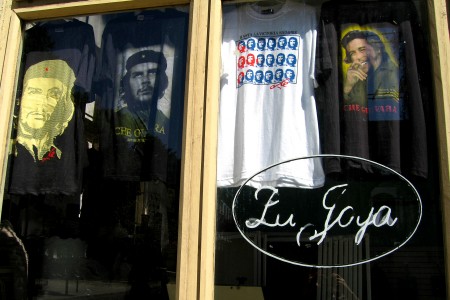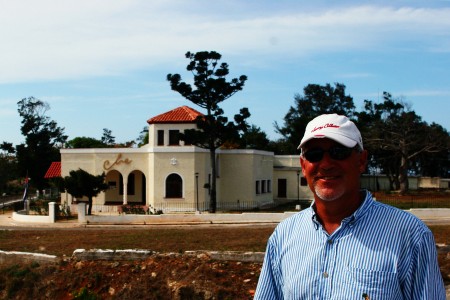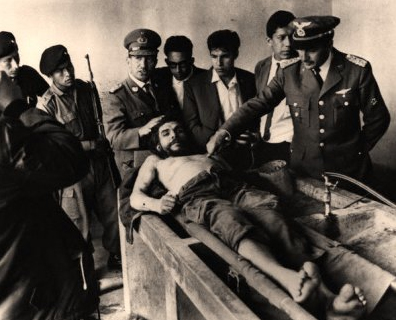I think I mentioned before that there is this weird secular trinity in Cuba with Fidel as the Holy Father, Hemingway as the Holy Ghost, and Che as Jesus Christ. And just as Christ has been merchandized in every way possible (yes, Virginia, you can order a toilet seat online with a painting of Jesus Christ on it), Che, whose main goal in his rather short and brutish life was to destroy capitalism, is now almost as famous as McDonald’s as an international brand.
There are very few tourist trinkets to buy in Cuba—except for the Che mugs, ashtrays, baseball caps, butter, tea bags, coffee, tank tops, berets, flags, cigars, humidors, rum, and of course, those omnipresent tank tops and T-shirts you’ll find in some store in just about every block in Havana.
Funny, no?
According to a story that ran in a London newspaper recently, the myth has so eclipsed reality that young Argentines have come up with an expression that rhymes perfectly in Spanish: “Tengo una remera del Che y no sé por qué,” or “I have a Che T-shirt and I don’t know why.”
At first blush, it seems incredible that there’s not a major museum dedicated to Che Guevara in Havana (with over two dozen museums, from the Museo del Ron, dedicated to rum, to the the Museo del Auto Antiguo, Fidel has pretty much covered all the bases). Across from the city, in Casablanca, appropriately within the shadow of the statue of Jesus Christ, is the Museo de la Comandancia del Che, but you won’t find much information on it (and although I’ve tried to go there on numerous times, it’s never been open).
This is where, on January 3, 1959, Che took over the fortress of San Carlos de la Cabaña, overlooking the strategic entrance to the city, and set up his command post at the beginning of the Revolution. From here, he ran the Comisión Depuradora—the Purifying Commission—where a military court, headed by Che, decided who was to be shot every day.
According to Javier Arzuaga, the Basque chaplain who gave comfort to those sentenced to die and personally witnessed dozens of executions, “there were about eight hundred prisoners in a space fit for no more than three hundred: former Batista military and police personnel, some journalists, a few businessmen and merchants. The revolutionary tribunal was made of militiamen. Che Guevara presided over the appellate court. He never overturned a sentence.
“I would visit those on death row at the galera de la muerte. A rumor went around that I hypnotized prisoners because many remained calm, so Che ordered that I be present at the executions. After I left in May, they executed many more, but I personally witnessed fifty-five executions.
“There was an American, Herman Marks, apparently a former convict. We called him “the butcher” because he enjoyed giving the order to shoot. I pleaded many times with Che on behalf of prisoners. I remember especially the case of Ariel Lima, a young boy. Che did not budge. Nor did Fidel, whom I visited. I became so traumatized that at the end of May 1959 I was ordered to leave the parish of Casa Blanca, where La Cabaña was located and where I had held Mass for three years. I went to Mexico for treatment. The day I left, Che told me we had both tried to bring one another to each other’s side and had failed. His last words were: “When we take our masks off, we will be enemies.”
Herman Marks was not the only one known as “the butcher.” Che, who by his own estimates was responsible for “about two thousand or so” executions was also called “El Carnicero” by his own soldiers.
Put that on your souvenir T-shirt.




Recent Comments